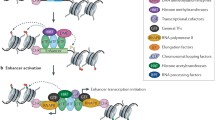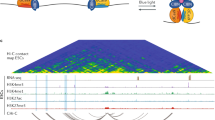Abstract.
An insulator or boundary element is a novel class of regulatory sequence and has properties consistent with a role in limiting enhancer activity; it helps to define the boundary between differentially regulated loci. Originally, an insulator was defined operationally by its ability to protect against positional effects and/or to block distal enhancer activity in transgenic assays, whereas recent experiments have focused on the role of insulators or boundaries in their native context. Many new features have been added to our concept of insulators, thereby revealing the complexity of their function. All these need to be accounted for by successful models. The research of insulator elements should provide new insights into the nature of enhancer function and gene regulation and provide an effective tool in applied gene therapy.
Similar content being viewed by others
Author information
Authors and Affiliations
Additional information
Electronic Publication
Rights and permissions
About this article
Cite this article
Zhan, HC., Liu, DP. & Liang, CC. Insulator: from chromatin domain boundary to gene regulation. Hum Genet 109, 471–478 (2001). https://doi.org/10.1007/s004390100601
Received:
Accepted:
Issue Date:
DOI: https://doi.org/10.1007/s004390100601




